I’ve been struck recently by how those who should know better seem to be in denial about our current situation. I’m not talking about Trump. He has become a non-entity at this point, like a child hopelessly wishing everything would just get better. However many serious people seem to be talking about “starting up the economy” without any clear sense that the world we knew before has been lost to us. Our way of living has been likely lost for years and we will likely never see the world we knew before. There is not likely to be a cure coming soon, or even a very successful treatment for that matter. There might be a successful vaccine developed, but don’t expect widespread availability until the fall of 2021. Of course, hundreds of thousands of Americans will die of this disease before then. Most estimates of deaths from the disease provided by the administration only go up to the end of summer, but this will be with us for far longer.
We have lost our way of life, because we cannot accept an outcome in which millions of Americans die instead of thousands. In fact, even if we chose the deaths we would still lose our way of life. One does not simply go about one’s life while so many people die and the healthcare system collapses. And so we choose to stay away from one another. We internalize new norms that make the physical presence of strangers (or even our family and friends) mentally painful for us. That changes us and our society.
I’ll give a somewhat trite example of this change, but one that I think is rather instructive. Just down the street from my house there is a neighborhood bar, a jazz club, and a breakfast place. They are all small — you might even say cramped. I love these places, and they are the soul of the neighborhood. But their profitability is incompatible with social distancing. In fact most bars, restaurants, and entertainment venues around the country are not likely profitable in a wold of social distancing, even if we assume that people can once again go to these places. There will almost certainly be new occupancy rules that require restaurants to cut seating at least in half. Of course, fancy takeout will be more common but so far demand for this has not come near to replacing sit-down restaurants. People aren’t willing to spend $50 per person on takeout, and they certainly will not buy alcohol as they do it (which is where many profits come from).
Any innovations to accommodate social distancing in restaurants does not address the basic incompatibility between bars and social distancing. In bars people socialize with strangers; they have to get close. In other words bars cannot succeed until Covid has been brought under control. But this will take a long time. Even antibody “certificates” would only allow a small portion of the population to go about their business, and only in places that have already been hit hard by the disease. This means that we will probably lose all of these businesses, as their owners realize that they simply cannot make a living by owning a restaurant or bar. This will also devastate the commercial real-estate market along with the service industry, and perpetuate the vicious cycle of recession.
That is just one example of how we will lose so much from our communities that make them worth living in. I don’t think disaster is inevitable, but it will require dramatic changes in public expenditures and laws. We will need widespread randomized testing, even of people who are not showing symptoms. It goes without saying that people who have flu-like symptoms should all be tested and tracked. However, given how widespread the disease is this is probably not technically possible. We have certainly shown no ability to do any large-scale well-organized testing.
Additionally, local governments must allow businesses to spread out. Bars and restaurants should be allowed to spill out into the streets, so that they can maintain distance between patrons while also making a profit. Open container laws should largely be eliminated. There are numerous other examples of creative legislation that might help. We must be willing to be flexible in abandoning some norms and ways of doing business in order to preserve those things that we value.
I don’t expect any of the solutions above to actually be implemented. And even then they may not be effective. Our situation is far worse than most of us imagine.
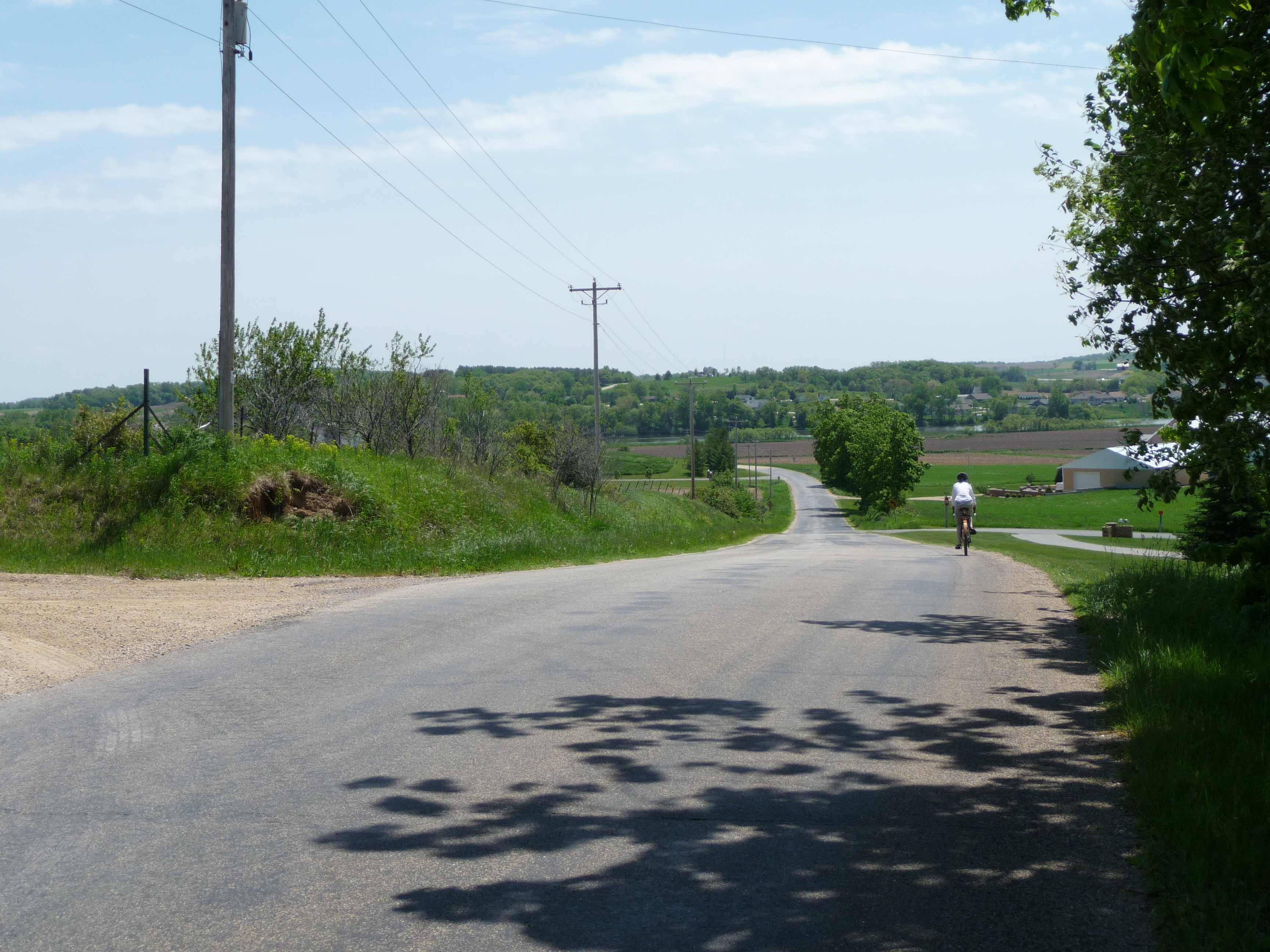
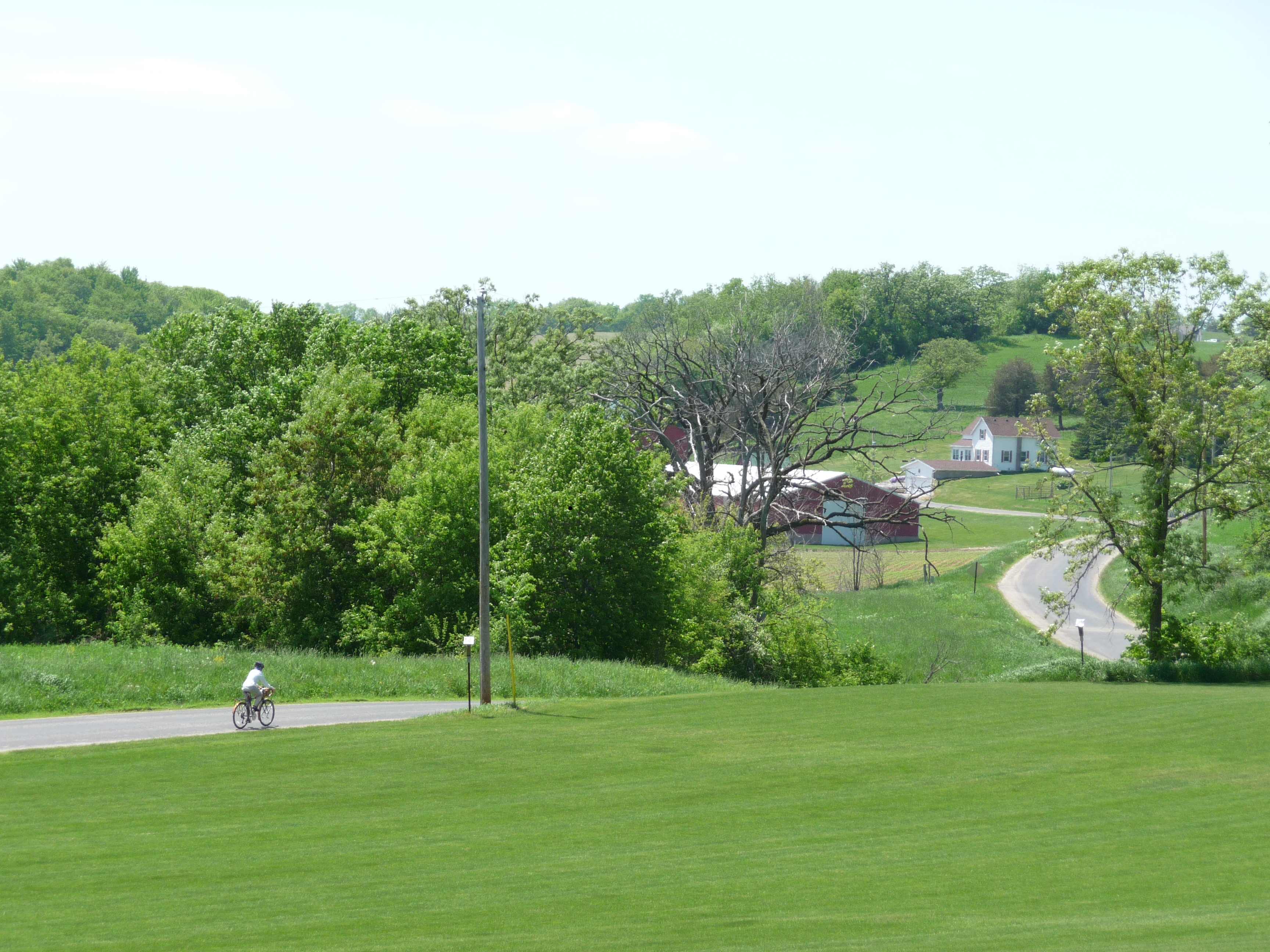
 and….Subdivisions!
and….Subdivisions!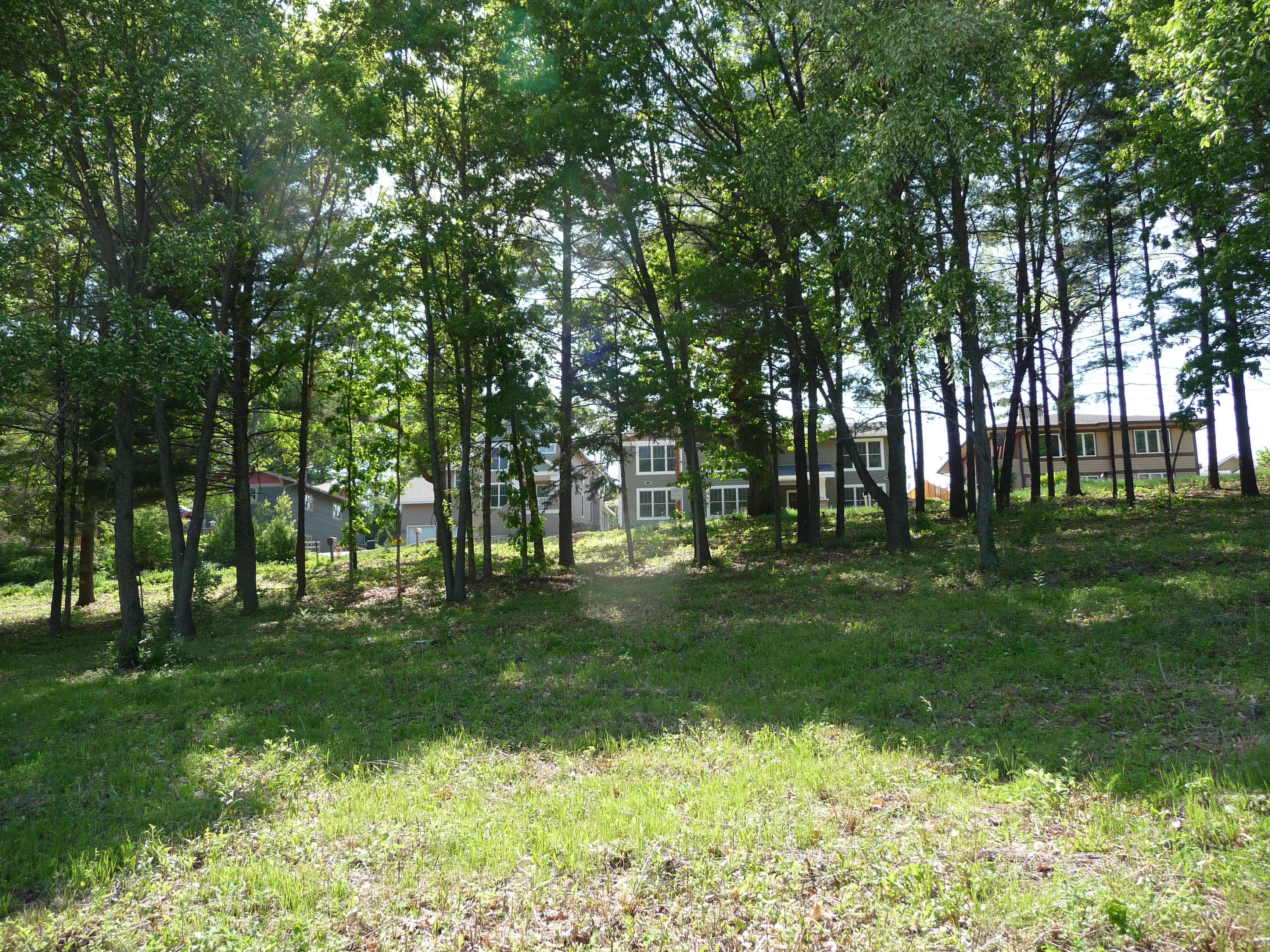
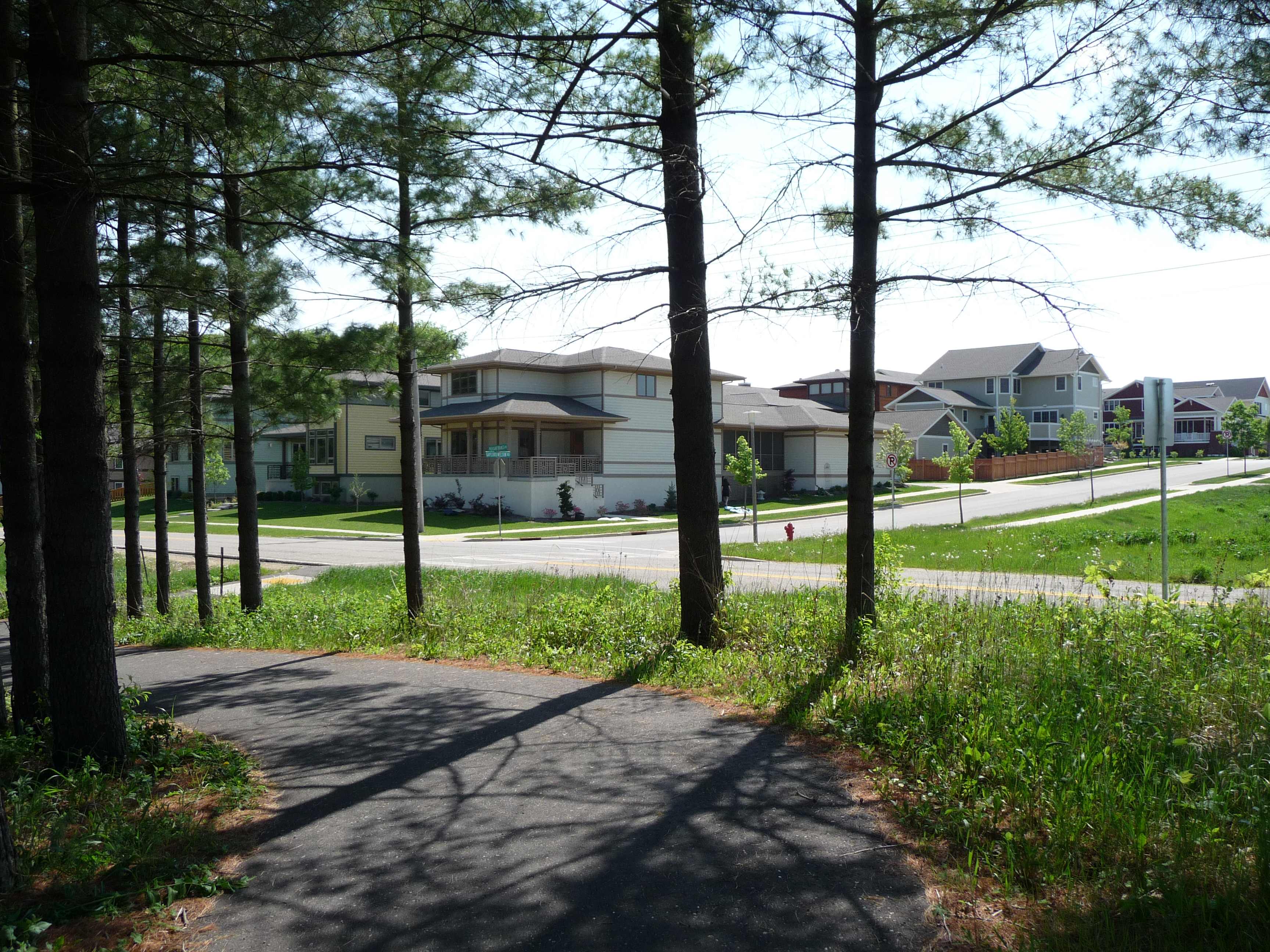 As one emerges from the nature preserve adjacent to Middlton Hills, you are treated to an interesting sight. This part of the Middleton Hills (the north-east side) is full of new and large prairie homes. That was what impressed me the most; these are very expensive homes, and that lends a certain air to the experience. It is yuppie, ordered, and clean (to the point of almost being sterile); how you respond to those three adjectives will likely determine how you will feel about Middleton Hills.
As one emerges from the nature preserve adjacent to Middlton Hills, you are treated to an interesting sight. This part of the Middleton Hills (the north-east side) is full of new and large prairie homes. That was what impressed me the most; these are very expensive homes, and that lends a certain air to the experience. It is yuppie, ordered, and clean (to the point of almost being sterile); how you respond to those three adjectives will likely determine how you will feel about Middleton Hills.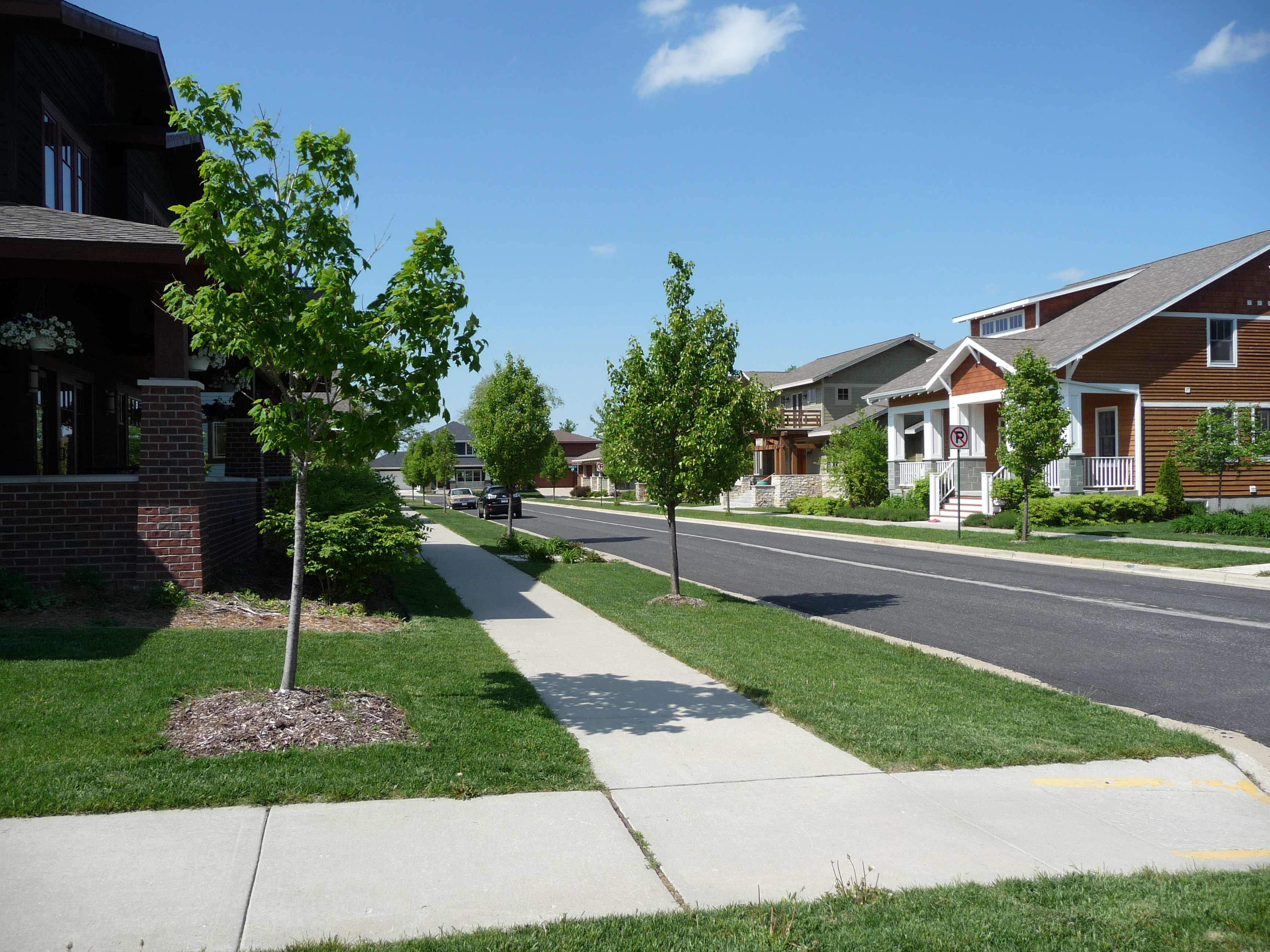 All of the lawns are perfectly manicured (more so than I have every really seen) and every house looks to be in perfect condition. The little trees and bushes seem to be carefully placed in a very deliberate way; and in fact, their placement is defined in the building plans. All of this has been approved by the community design board; I didn’t like it; neighborhoods with a great deal of complexity and nature make me feel like there is something alive there. Large, rich suburbs make me feel a bit uneasy;if I actually lived in such a place, I might start drinking a lot more. However, we should remember that this is far newer than many of the neighborhoods that might seem more friendly or natural. The complexity of old neighborhoods takes time, so perhaps Middleton Hills will become less sterile as it ages. However, I wonder if the extensive controls of buildings and landscaping would allow for this development. Only time will tell, I suppose.
All of the lawns are perfectly manicured (more so than I have every really seen) and every house looks to be in perfect condition. The little trees and bushes seem to be carefully placed in a very deliberate way; and in fact, their placement is defined in the building plans. All of this has been approved by the community design board; I didn’t like it; neighborhoods with a great deal of complexity and nature make me feel like there is something alive there. Large, rich suburbs make me feel a bit uneasy;if I actually lived in such a place, I might start drinking a lot more. However, we should remember that this is far newer than many of the neighborhoods that might seem more friendly or natural. The complexity of old neighborhoods takes time, so perhaps Middleton Hills will become less sterile as it ages. However, I wonder if the extensive controls of buildings and landscaping would allow for this development. Only time will tell, I suppose.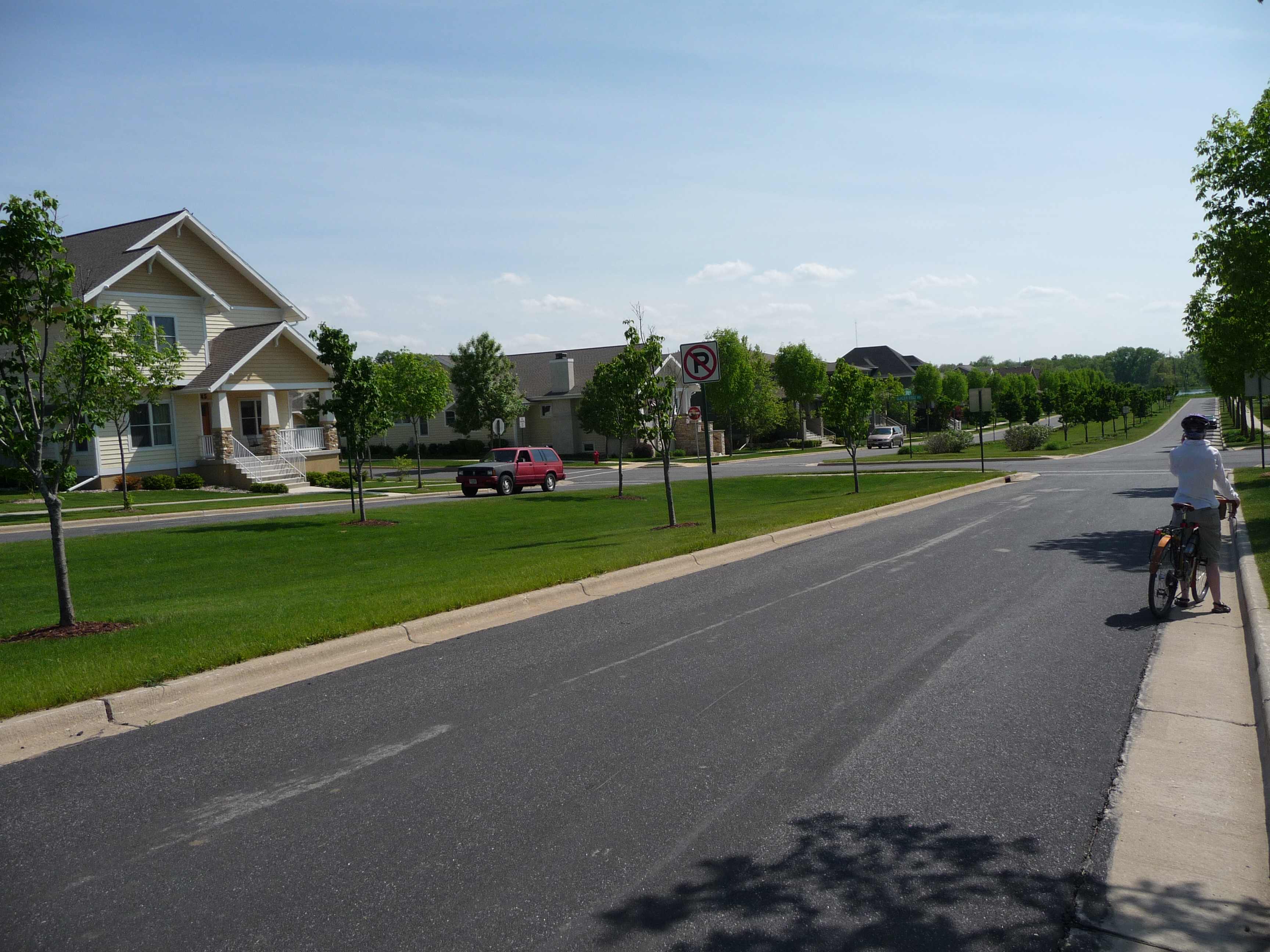 Above is the boulevard; perhaps when the trees grow up it will create a nice place to be but right now it just makes for a large expanse that is void of any life. It does function as an indication of the main road; it made it easy for us to find the path to the community center but didn’t do much else. One thing that started to bother me was the lack of people out and about; we had ridden through a good portion of the place without seeing a soul outside of their cars. This entire construction (higher density, with front porches very close to the sidewalk) is supposed to make more people walk around the community but on such a beautiful Sunday afternoon, the streets were vacant. That makes it seem like something is very wrong with the neighborhood.
Above is the boulevard; perhaps when the trees grow up it will create a nice place to be but right now it just makes for a large expanse that is void of any life. It does function as an indication of the main road; it made it easy for us to find the path to the community center but didn’t do much else. One thing that started to bother me was the lack of people out and about; we had ridden through a good portion of the place without seeing a soul outside of their cars. This entire construction (higher density, with front porches very close to the sidewalk) is supposed to make more people walk around the community but on such a beautiful Sunday afternoon, the streets were vacant. That makes it seem like something is very wrong with the neighborhood.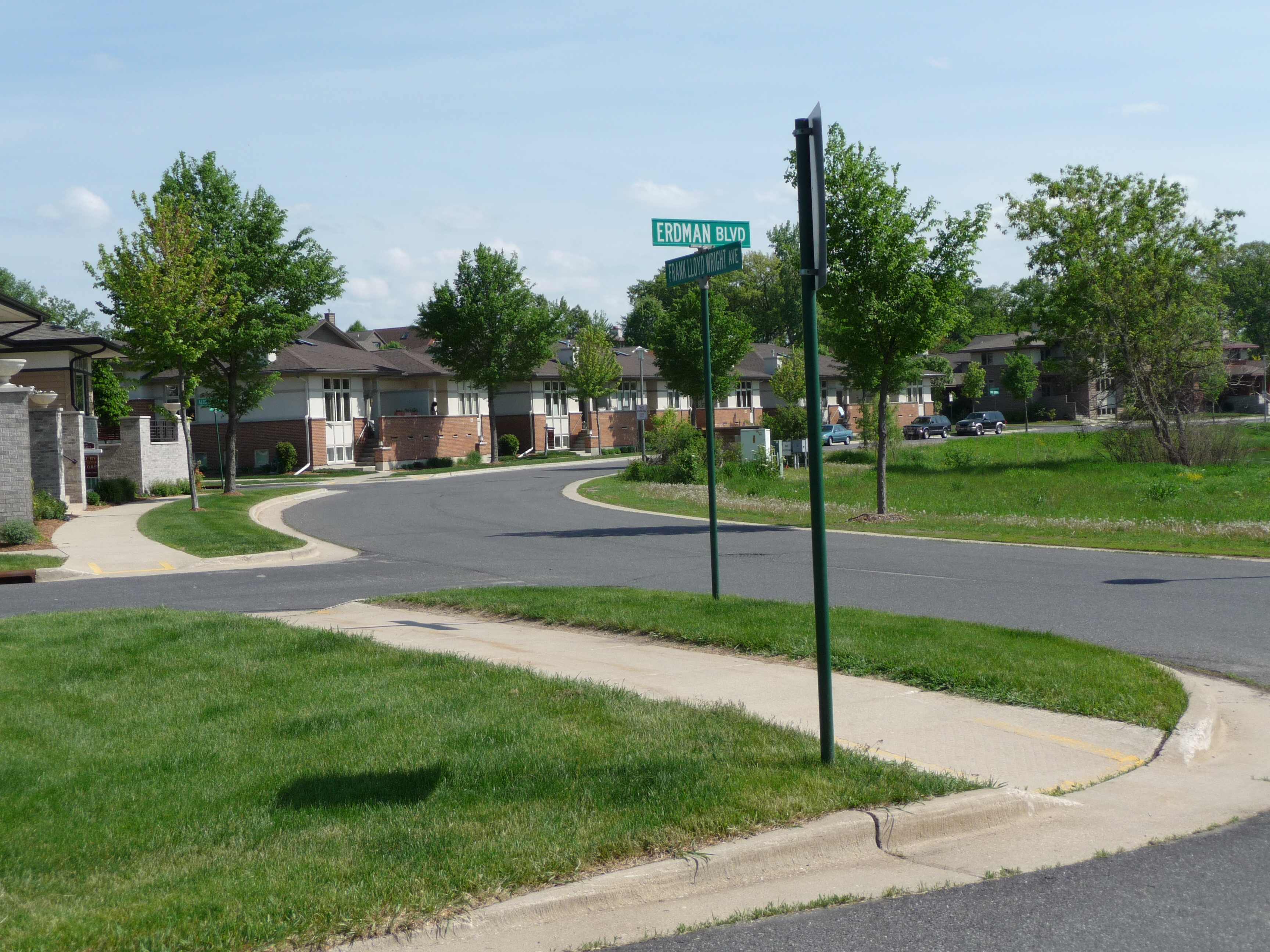 The closer one gets to the community center, the higher the density becomes. Here you see duplexes (I think); I actually think these are pretty attractive and I like the idea of increasing density in this way. However, these are extremely expensive. I recently found
The closer one gets to the community center, the higher the density becomes. Here you see duplexes (I think); I actually think these are pretty attractive and I like the idea of increasing density in this way. However, these are extremely expensive. I recently found 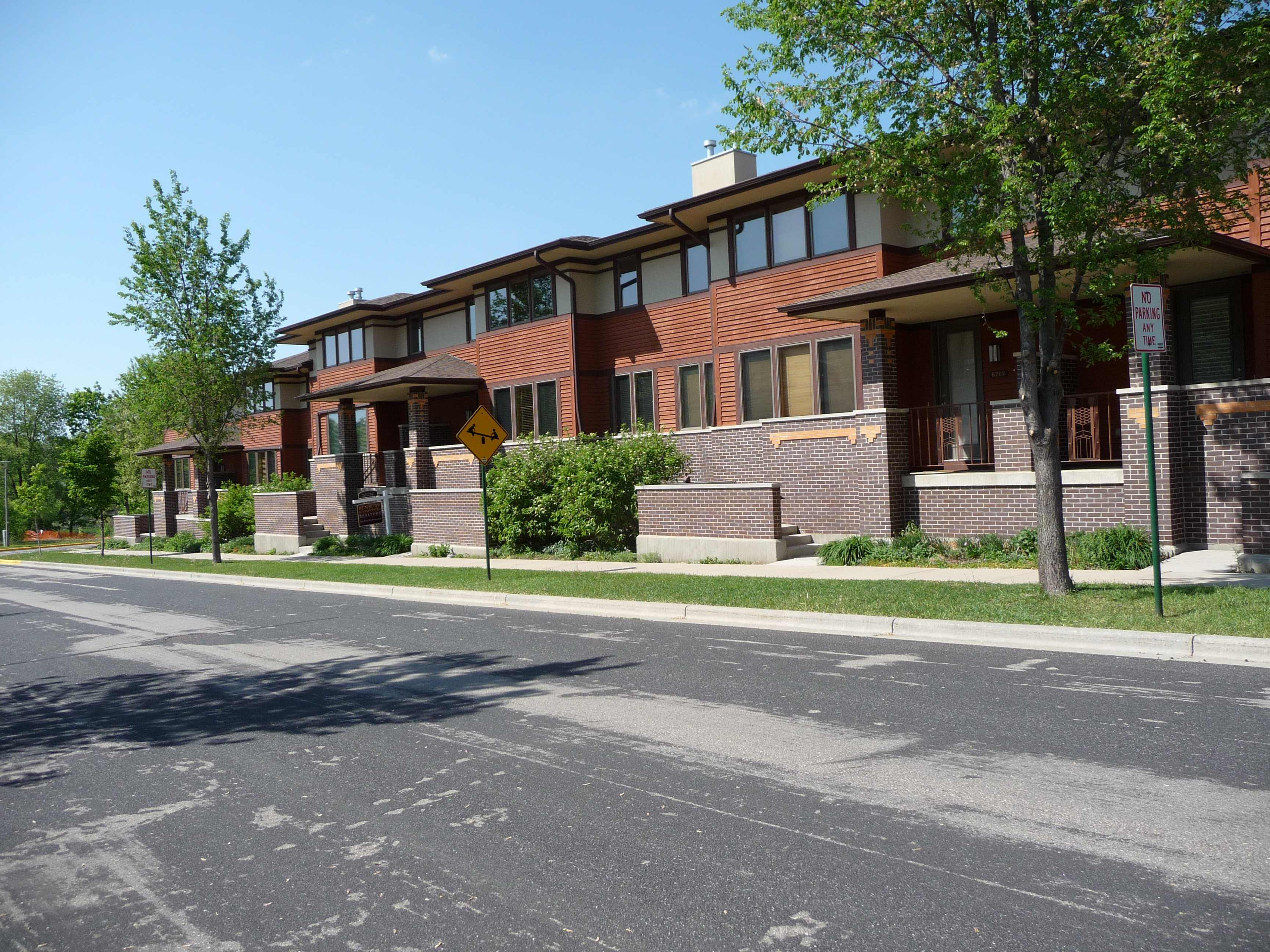
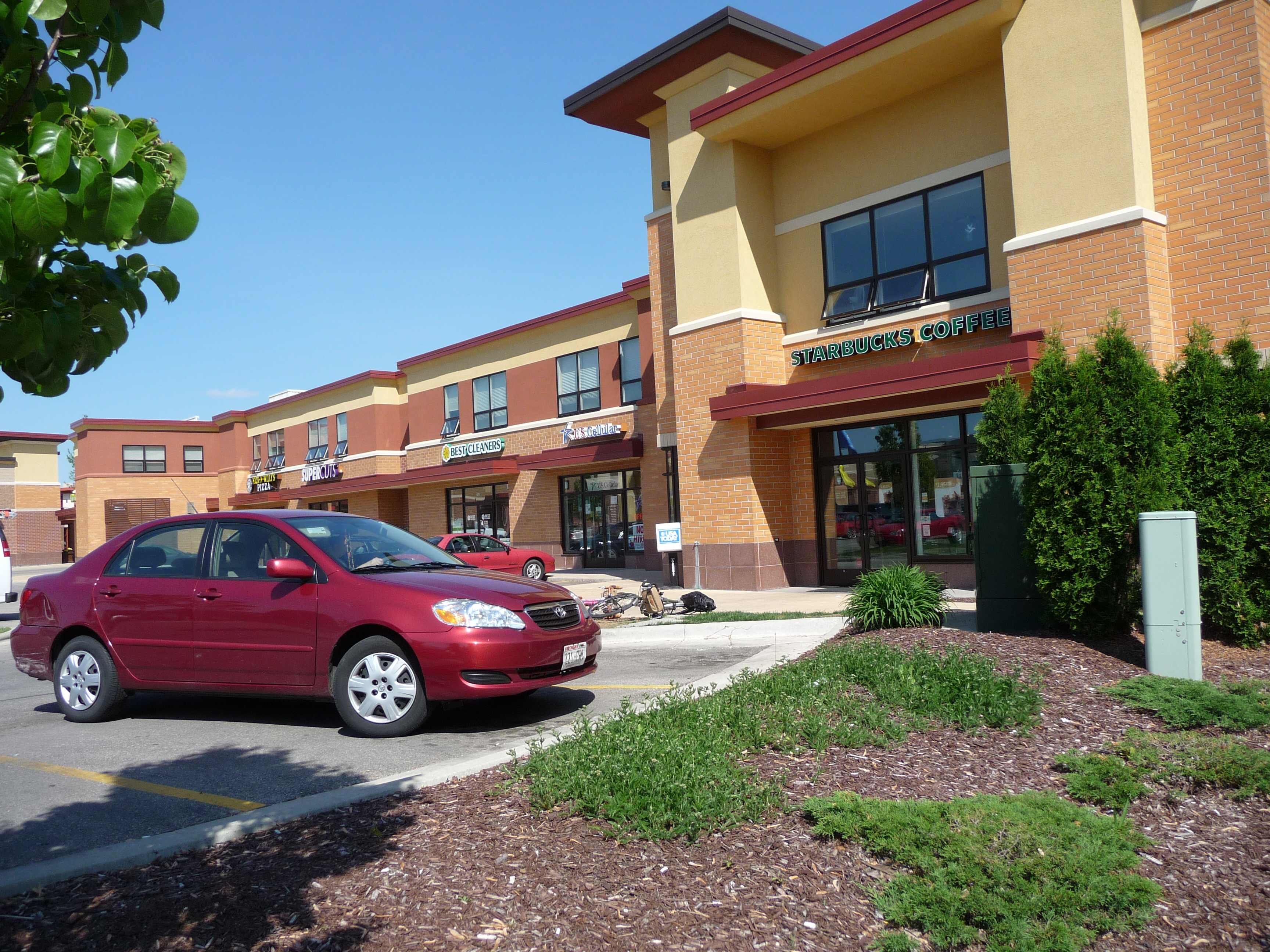 Here is the “community center”; the supermarket is off to the left (outside of the picture); it is a prairie style strip mall, I suppose. The idea of having a shopping center close to ones home is that you might walk there. I got the impression that most people took their car, even if they were just going to get a cup of coffee (and remember this was a near perfect day to be outside).
Here is the “community center”; the supermarket is off to the left (outside of the picture); it is a prairie style strip mall, I suppose. The idea of having a shopping center close to ones home is that you might walk there. I got the impression that most people took their car, even if they were just going to get a cup of coffee (and remember this was a near perfect day to be outside).